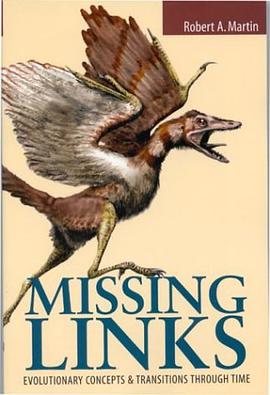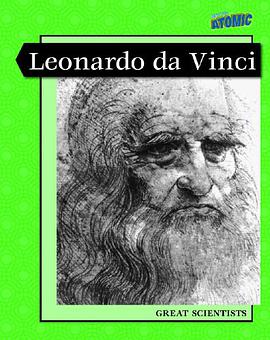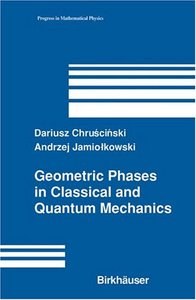Frontmatter -22
Front Cover -22
Back Cover -21
IEEE Press Series on Electromagnetic Wave Theory -19
Title -18
Copyright -17
Foreword to the reissued edition -16
IEEE Press Editorial Board -15
Contents -14
Preface -6
1 Introduction 1
1.1 Microwave Frequencies 1
1.2 Microwave Applications 3
1.3 Microwave Circuit Elements and Analysis 6
References 16
2 Electromagnetic Theory 17
2.1 Maxwel's Equations 17
2.2 Constitutive Relations 23
2.3 Static Fields 28
2.4 Wave Equation 31
2.5 Energy and Power 33
2.6 Boundary Conditions 39
2.7 Plane Waves 44
Plane Waves in Free Space 44
2.8 Reflection from a Dielectric Interface 49
1. Parallel Polarization 49
2. Perpendicular Polarization 52
2.9 Reflection from a Conducting Plane 53
2.10 Potential Theory 56
*2.11 Derivation of Solution for Vector Potential 59
2.12 Lorentz Reciprocity Theorem 62
Problems 65
References 70
3 Transmission Lines and Waveguides 71
Part 1 Waves on Transmission Lines 72
3.1 Waves on An Ideal Transmission Line 72
3.2 Terminated Transmission Line: Resistive Load 78
3.3 Capacitive Termination 82
3.4 Steady-State Sinusoidal Waves 85
3.5 Waves on a Lossy Transmission Line 86
Loss-Free Transmission Line 88
Low-Loss Transmission Line 89
3.6 Terminated Transmission Line: Sinusoidal Waves 89
Terminated Lossy Line 94
Part 2 Field Analysis of Transmission Lines 96
3.7 Classification of Wave Solutions 96
TEM Waves 99
TE Waves 100
TM Waves 102
3.8 Transmission Lines (Field Analysis) 104
Lossless Transmission Line 104
Transmission Line with Small Losses 108
3.9 Transmission-Line Parameters 112
3.10 Inhomogeneously Filled Parallel-Plate Transmission Line 117
Low-Frequency Solution 121
High-Frequency Solution 123
3.11 Planar Transmission Lines 125
3.12 Microstrip Transmission Line 130
Low-Frequency Solutions 136
Microstrip Attenuation 153
High-Frequency Properties of Microstrip Lines 158
Attenuation 163
3.13 Coupled Microstrip Lines 164
3.14 Strip Transmission Lines 170
Attenuation 171
3.15 Coupled Strip Lines 173
3.16 Coplanar Transmission Lines 175
Attenuation 178
High-Frequency Dispersion 180
Part 3 Rectangular and Circular Waveguides 180
3.17 Rectangular Waveguide 181
TE Waves 182
Power 186
Attenuation 187
Dominant TE10 Mode 190
TM Modes 193
3.18 Circular Waveguides 194
TM Modes 194
TE Modes 196
3.19 Wave Velocities 198
Phase Velocity 199
Group Velocity 200
Energy-Flow Velocity 204
3.20 Ridge Waveguide 205
3.21 Fin Line 208
Problems 210
References 219
4 Circuit Theory for Waveguiding Systems 220
4.1 Equivalent Voltages and Currents 221
4.2 Impedance Description of Waveguide Elements and Circuits 224
One-Port Circuits 224
Lossless One-Port Termination 228
*4.3 Foster's Reactance Theorem 230
*4.4 Even and Odd Properties of Zin 232
4.5 N-Port Circuits 233
Proof of Symmetry for the Impedance Matrix 235
Proof of Imaginary Nature of [Z] for a Lossless Junction 236
Normalized Impedance and Admittance Matrices 237
4.6 Two-Port Junctions 238
Some Equivalent Two-Port Circuits 245
4.7 Scattering-Matrix Formulation 248
Symmetry of Scattering Matrix 250
Scattering Matrix for a Lossless Junction 251
4.8 Scattering Matrix for a Two-Port Junction 254
4.9 Transmission-Matrix Representation 257
Voltage-Current Transmission Matrix 257
Wave-Amplitude Transmission Matrix 259
*4.10 Signal Flow Graphs 260
*4.11 Generalized Scattering Matrix for Power Waves 268
*4.12 Excitation of Waveguides 276
Probe Coupling in a Rectangular Waveguide 276
Radiation from Linear Current Elements 281
Radiation from Current Loops 283
*4.13 Waveguide Coupling by Apertures 284
Aperture in a Transverse Wall 286
Aperture in Broad Wall of a Waveguide 290
Problems 294
References 302
5 Impedance Transformation and Matching 303
5.1 Smith Chart 304
5.2 Impedance Matching with Reactive Elements 308
Single-Stub Matching 309
5.3 Double-Stub Matching Network 312
5.4 Triple-Stub Tuner 317
5.5 Impedance Matching with Lumped Elements 319
Circuit Q and Bandwidth 325
5.6 Design of Complex Impedance Terminations 330
5.7 Invariant Property of Impedance Mismatch Factor 334
5.8 Waveguide Reactive Elements 339
Shunt Inductive Elements 340
Shunt Capacitive Elements 341
Waveguide Stub Tuners 342
5.9 Quarter-Wave Transformers 343
5.10 Theory of Small Reflections 347
5.11 Approximate Theory for Multisection Quarter-Wave Transformers 348
5.12 Binomial Transformer 350
5.13 Chebyshev Transformer 352
*5.14 Chebyshev Transformer (Exact Results) 356
5.15 Filter Design Based on Quarter-Wave-Transformer Prototype Circuit 360
Junction Capacitance and Length Compensation 365
5.16 Tapered Transmission Lines 370
Exponential Taper 372
Taper with Triangular Distribution 372
*5.17 Synthesis of Transmission-Line Tapers 373
*5.18 Chebyshev Taper 380
*5.19 Exact Equation for the Reflection Coefficient 383
Problems 387
References 393
6 Passive Microwave Devices 394
6.1 Terminations 394
Variable Short Circuit 395
6.2 Attenuators 397
Electronically Controlled Attenuators 400
6.3 Phase Shifters 404
Rotary Phase Shifter 404
Electronically Controlled Phase Shifters 409
6.4 Directional Couplers 413
Directional-Coupler Designs 416
Coupled-Line Directional Couplers 427
Branch-Line Directional Coupler 432
Lange Directional Coupler 434
6.5 Hybrid Junctions 435
Magic T 435
Hybrid Ring 437
6.6 Power Dividers 442
6.7 Microwave Propagation in Ferrites 450
6.8 Faraday Rotation 460
6.9 Microwave Devices Employing Faraday Rotation 464
Gyrator 464
Isolator 466
Resonance Isolator 467
6.10 Circulators 468
Three-Port Circulator 471
Field Analysis of Three-Port Circulator 473
6.11 Other Ferrite Devices 476
Problems 476
References 479
7 Electromagnetic Resonators 481
7.1 Resonant Circuits 481
7.2 Transmission-Line Resonant Circuits 485
Series Resonance; Short-Circuited Line 485
Open-Circuited Line 487
Antiresonance 488
7.3 Microstrip Resonators 490
Circular Disk Resonator 496
7.4 Microwave Cavities 500
Rectangular Cavity 500
Cylindrical Cavity 504
7.5 Dielectric Resonators 508
7.6 Equivalent Circuits for Cavities 517
Aperture-Coupled Cavity 517
Loop-Coupled Cavity 523
*7.7 Field Expansion in a General Cavity 525
Cavity Field Expansions in Terms of Short-Circuit Modes 527
Electric Field Expansion 528
Orthogonality Properties 529
Magnetic Field Expansion 531
Orthogonality Properties 531
Relationship between En and Hn Modes 532
*7.8 Oscillations in a Source-Free Cavity 533
Cavity with Lossy Walls 534
Degenerate Modes 536
*7.9 Excitation of Cavities 538
*7.10 Cavity Perturbation Theory 541
Problems 545
References 548
8 Periodic Structures and Filters 550
8.1 Capacitively Loaded Transmission-Line-Circuit Analysis 551
8.2 Wave Analysis of Periodic Structures 557
8.3 Periodic Structures Composed of Unsymmetrical Two-Port Networks 559
8.4 Terminated Periodic Structures 560
8.5 Matching of Periodic Structures 563
8.6 k0-β Diagram 564
*8.7 Group Velocity and Energy Flow 566
8.8 Floquet's Theorem and Spatial Harmonics 569
8.9 Periodic Structures for Traveling-Wave Tubes 571
Periodic Structures for Millimeter-Wave Traveling-Wave Tubes 577
8.10 Sheath Helix 580
*8.11 Some General Properties of a Helix 583
8.12 Introduction to Microwave Filters 585
8.13 Image-Parameter Method of Filter Design 587
8.14 Filter Design by Insertion-Loss Method 591
8.15 Specification of Power Loss Ratio 592
Maximally Flat Filter Characteristic 593
Chebyshev Filter 593
8.16 Some Low-Pass-Filter Designs 595
8.17 Frequency Transformations 598
Frequency Expansion 599
Low-Pass to High-Pass Transformation 599
Low-Pass to Bandpass Transformation 600
Period Bandpass Mapping 602
8.18 Impedance and Admittance Inverters 603
8.19 A Microstrip Half-Wave Filter 617
8.20 Microstrip Parallel Coupled Filter 626
8.21 Quarter-Wave-Coupled Cavity Filters 635
8.22 Direct-Coupled Cavity Filters 639
8.23 Other Types of Filters 642
Problems 642
References 647
9 Microwave Tubes 648
9.1 Introduction 648
9.2 Electron Beams with dc Conditions 650
Ion-Neutralized Beam 650
Beam with Axially Confined Flow 651
Brillouin Flow 652
9.3 Space-Charge Waves on Beams with Confined Flow 654
9.4 Space-Charge Waves on Unfocused Beams 661
9.5 Ac Power Relations 667
9.6 Velocity Modulation 670
9.7 Two-Cavity Klystron 678
Excitation of a Cylindrical Cavity 679
Cavity Excitation by a Velocity-Modulated Beam 683
9.8 Reflex Klystron 686
9.9 Magnetron 690
9.10 O-Type Traveling-Wave Tube 692
9.11 M-Type Traveling-Wave Tube 699
9.12 Gyrotrons 701
Field-Particle Interaction in a Gyrotron 703
9.13 Other Types of Microwave Tubes 708
Problems 709
References 712
10 Solid-State Amplifiers 713
10.1 Bipolar Transistors 716
Transistor Biasing 720
10.2 Field-Effect Transistors 721
FET Biasing 724
10.3 Circle-Mapping Properties of Bilinear Transformations 725
10.4 Microwave Amplifier Design Using Parameters 726
10.5 Amplifier Power Gain 728
Derivation of Expressions for Gain 730
10.6 Amplifier Stability Criteria 735
Conditionally Stable Devices 740
10.7 Constant Power-Gain Circles 744
Properties of the Constant Gain Circles 746
Stable Devices 746
Unstable Devices 750
10.8 Basic Noise Theory 760
Filtered Noise 762
Noise in Active Devices 765
Noisy Two-Port Networks 766
10.9 Low-Noise Amplifier Design 767
Noise Figure 768
Noise Figure for Cascaded Stages 770
Constant Noise-Figure Circles 772
10.10 Constant Mismatch Circles 776
Constant Input Mismatch Circle 778
Output Impedance-Mismatch Circle 780
10.11 Microwave Amplifier Design 780
Single-Stage Amplifier Design 781
Design of Second Stage for a Two-Stage Amplifier 788
10.12 Other Aspects of Microwave Amplifier Design 793
Problems 795
References 798
11 Parametric Amplifiers 799
11.1 p-n Junction Diodes 800
11.2 Manley-Rowe Relations 804
11.3 Linearized Equations for Parametric Amplifiers 807
11.4 Parametric Up-Converter 809
11.5 Negative-Resistance Parametric Amplifier 814
11.6 Noise Properties of Parametric Amplifiers 821
Problems 829
References 830
12 Oscillators and Mixers 831
12.1 Gunn Oscillators 832
Gunn Oscillator Circuits 835
12.2 IMPATT Diodes 837
12.3 Transistor Oscillators 840
12.4 Three-Port Description of a Transistor 843
12.5 Oscillator Circuits 849
12.6 Oscillator Design 851
12.7 Mixers 856
Linear Mixer Operation 861
Nonlinear Mixer Operation 862
12.8 Mixer Noise Figure 864
12.9 Balanced Mixers 865
12.10 Other Types of Mixers 868
12.11 Mixer Analysis Using Harmonic Balancing 869
Problems 873
References 875
Appendixes 876
I Useful Relations from Vector Analysis 876
I.1 Vector Algebra 876
I.2 Vector Operations in Common Coordinate Systems 877
Rectangular Coordinates 877
Cylindrical Coordinates 877
Spherical Coordinates 878
I.3 Vector Identities 879
I.4 Green's Identities 880
II Bessel Functions 881
II.1 Ordinary Bessel Functions 881
II.2 Modified Bessel Functions 883
References 885
III Conformal Mapping Techniques 886
III.1 Conformal Mapping 886
III.2 Elliptic Sine Function 889
III.3 Capacitance between Two Parallel Strips 892
III.4 Strip Transmission Line 896
III.5 Conductor Loss 898
III.6 Conductor Losses for a Microstrip Transmission Line 903
III.7 Attenuation for a Coplanar Line 905
IV Physical Constants and Other Data 911
IV.1 Physical Constants 911
IV.2 Conductivities of Materials 912
IV.3 Dielectric Constants of Materials 912
IV.4 Skin Depth in Copper 912
Index 913
Author Index 913
ABC 913
DEFGHIJKLM 914
NOPRSTUVWYZ 915
Subject Index 917
AB 917
CD 918
EFGH 919
IJKLM 920
NOP 921
QRS 922
TVW 923
· · · · · · (
收起)






















